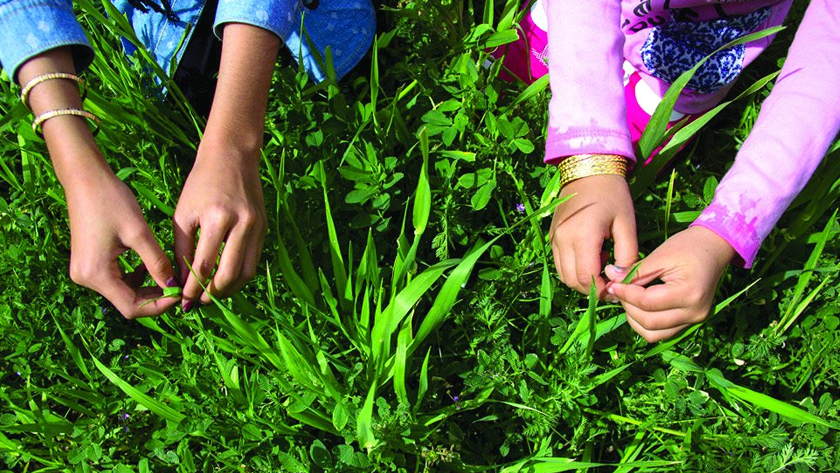Iran Press/ Iran News: The 13th day of Farvardin has been named as Sizdah-Be-Dar or Nature Day in Iranian culture that is an ancient ritual and also it is one of the most important common and shared customs among Iranian tribes. This day is an official holiday in Iran.
Iranians annually celebrate this day by coming the new year and spring season; spending 12 days of Nowruz holidays with picnicking outdoors in nature; Sizdah- Be-Dar ceremony is hold with many various methods and customs in different regions of the country. The 13 days of Nowruz holidays will end after this day and everything will return to routine form.
Moreover, “Sizdah” is number 13 in Persian language and “Be-dar” means getting rid of something and therefore “Sizdah bedar” gives the meaning of “Getting Rid of Thirteen” which is usually treated as an unlucky number.
There are various analysis on the different reasons of Sizdah-Be-Dar genesis. The number of 13 was an unlucky number in mythological culture of ancient Iranian and many other nations; therefore, they believed that an unpleasant thing occurs in this day and because of that, they spend it outdoors, even for a short time and celebrate this day to save themselves from disasters caused by 13.
Today, no one accepts 13 as an unlucky number and people mostly believe that it is just a superstition. According to another belief, the 13th day of each month in ancient Iranian thirty-day calendar was related to the Tir or Tishtar angel (Rain Star) and it is a blessed and happy day.
Different ceremonies based on each region’s culture are common in Sizdah-Be-Dar such as game, sport, local match, wearing traditional clothes, playing music, eating the lettuce with Sekanjebin (one of the oldest Iranian drink), cooking local foods, different types of Ash and the other customs of Iranian tribes.

The other part of Sizdah-Be-Dar rituals are originated from some mythological beliefs and cultures like "eavesdrop on conversations", fortune-telling, the humorous custom of "Sizdah-Be-Dar’s lie" or knotting the green and throwing away the green which are common customs among Iranian in this day.
Traditions of 'Sizdah Be-dar'
Dorough-e Sizdah (April fools) in Iran
Dorough-e Sizdah is a tradition for having fun and entertainment on Farvardin 13 that incidentally is very similar to the traditions of other cultures on this day. April fools jokes are just like the pranks that we pull on our friends as Dorough-e Sizdah. April 1 coincides with Farvardin 13 every four years. In the three years that are in between, it coincides with Farvardin 12.
Americans spend April 1 playing tricks and fun pranks on their friends and joking around with them.
The British think that bad luck goes to someone who tries to pull a prank on a friend in the afternoon, because by this time everyone is already prepared, and will not be taken by surprise. The prank will fail.
In India, a festival called “Holi” or “The Festival of Color” is customary on the day before April 1. In Portugal, people throw flour at each other in their fun flour-bombing celebration of April 1. The French have a tradition for April 1 called “poisson d’avril”, or “fish of April.” They stick a piece of paper on their unsuspecting friend’s back that has a picture of a fish. This is to say that this poor friend is simple and gullible.
Tying knots in the grass
Tying knots in the grass, in Farsi “Sabzeh gereh zadan,” is a prayer for the fulfillment of wishes; most notably, to eliminate bad luck. It is also a popular belief that an unmarried woman’s prayer and hope for tying knots in the grass has to do with her wish to find a suitable husband.

The tying of knots in the grass may also signify striving to form a link between life and nature.
Throwing of the Haft Sin Sprouts to Running Water
Ancient Persians were of the belief that all woes and miseries are absorbed by the freshness of the Sabzeh (sprouts) that they put on their Haft Sin; therefore it was necessary to cast the sprouts into running water.
Throwing of Thirteen Pebbles
In regions populated by the Kurdish people, it is traditional to throw thirteen pebbles behind one’s shoulder to rid oneself of bad luck. The people also make one wish for each stone they throw.
Nowruz, with its familial traditions, brings its rites and ceremonies to the community and nourishes the bond between the people in two ways: through the 'Chaharshanbe Soori' celebrations, and Sizdah Be-dar gatherings, which are both emblematic of collective solidarity.
206
Read More:
Beauty of Spring and Nowruz in Isfahan Flower Garden
ahmad shirzadian

